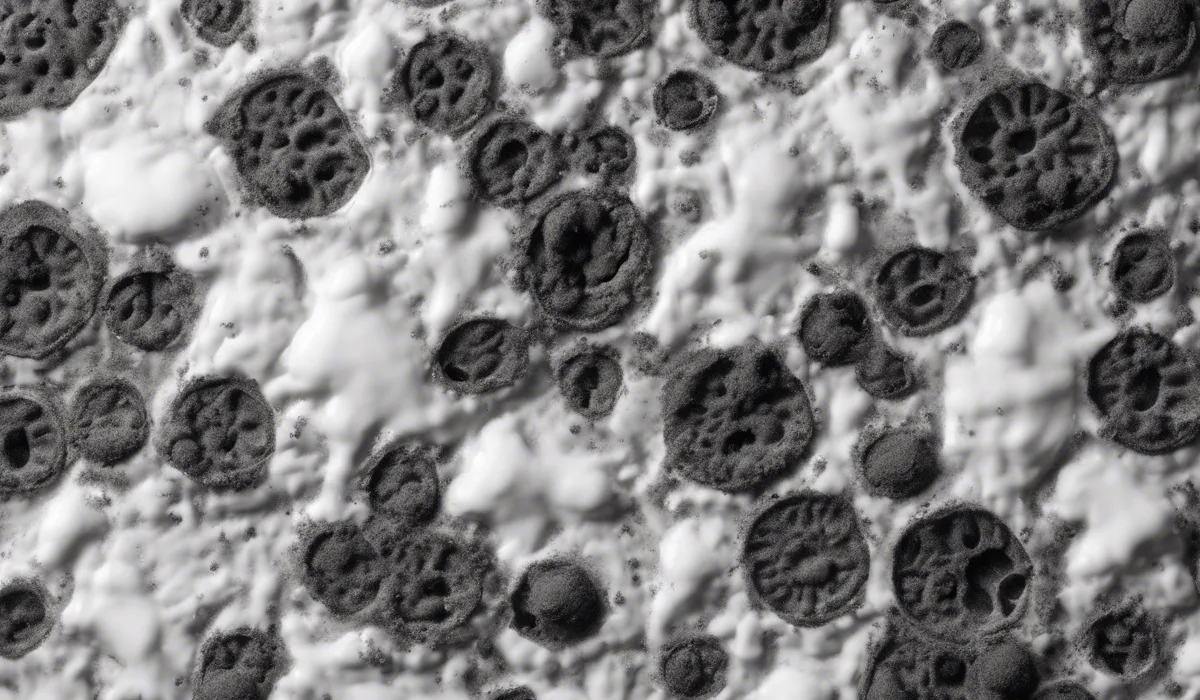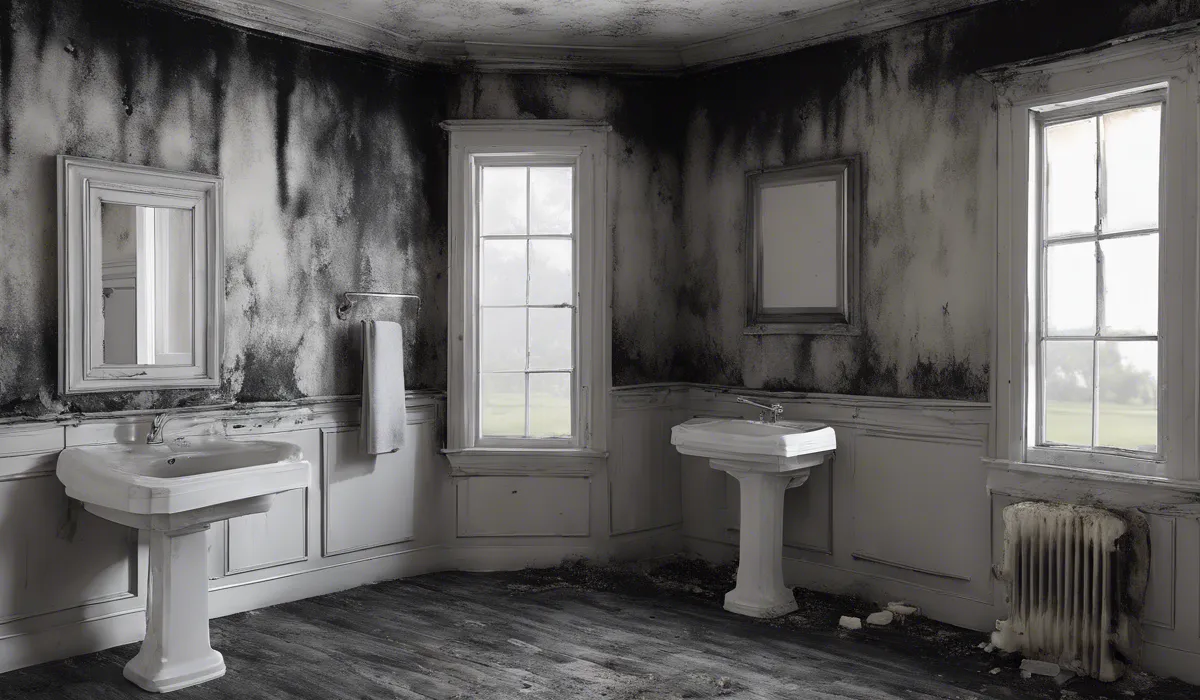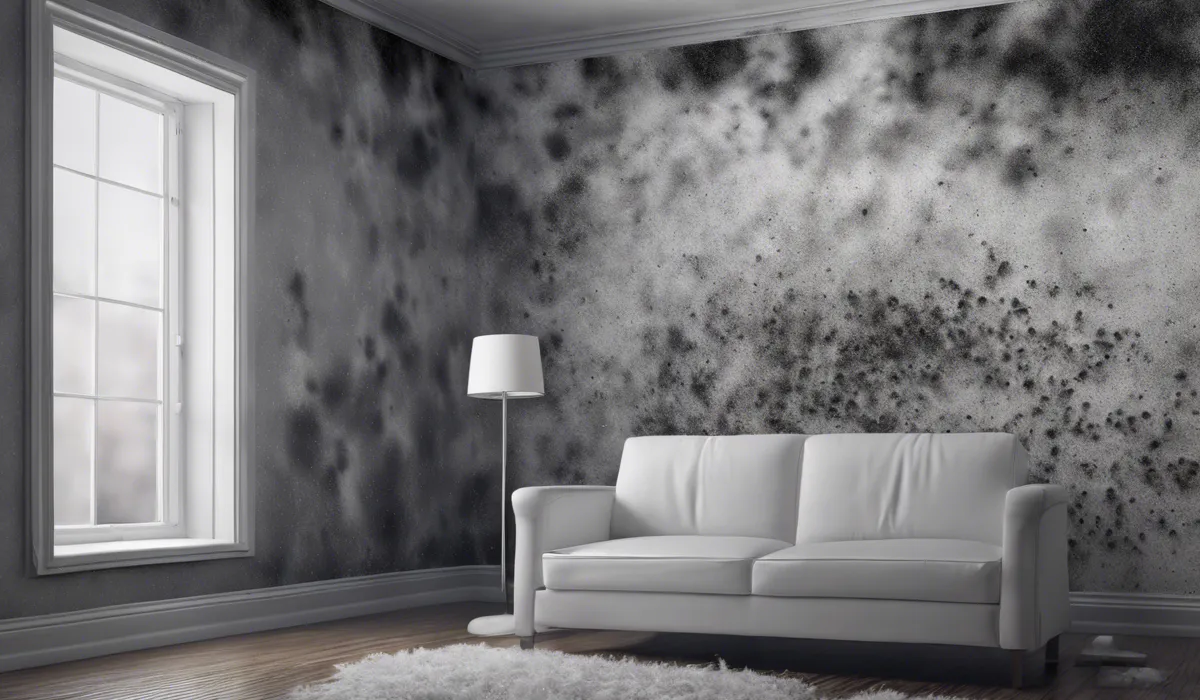Black mold, or Stachybotrys chartarum, is relatively common in moist, damp environments. It often grows in homes with water damage or high humidity. Its prevalence in indoor environments varies, but it is not the most common household mold. Prompt remediation is advised when detected.
.Understanding Black Mold

What is Black Mold?
Black mold, known by scientists as Stachybotrys chartarum, is a type of fungus that thrives in damp, warm environments.
When we talk about mold in our homes, this specific kind often comes to mind because of its dark color and slimy appearance. It loves places where there is lots of water like leaky roofs or pipes.
Characteristics of Black Mold
Black mold is easy to spot. It has a dark green or black color and a texture that can look like cotton.
It might also be slimy if it’s growing where there’s water. Don’t touch it because it can be harmful. We usually find it on stuff like wood, ceiling tiles, or drywall when they get wet and don’t dry out fast.
Perfect Conditions for Black Mold
Black mold loves moisture, warmth, and food from materials like paper, cardboard, and wood.
It grows best when the humidity is high, above 55%, and the temperature is between 77 to 86 degrees Fahrenheit. If your home has these conditions, black mold might start growing.
Where Black Mold is Found?
Black mold can hide in many places in our houses. It’s often in damp basements, bathrooms, and any spot that’s been flooded.
It likes dark, out-of-the-way places, so it might grow behind walls or above ceiling tiles where pipes have leaked. Always keep an eye on these places if they get wet.
Prevalence of Black Mold in Homes and Buildings

Mold Presence Statistics
Studies tell us that mold is in almost every building. But not all mold is black mold. The exact numbers change, but it’s not rare to find some kind of mold in places where water damage has happened or where there’s a lot of moisture.
Why Black Mold is Widespread?
Black mold spreads easily because its spores float through the air and land on damp spots.
Buildings that have leaks, flooding, or high humidity are perfect homes for black mold. It’s tough and can grow on many materials found in buildings, making it a common problem when water damage isn’t fixed right away.
Regional Black Mold Differences
In places where it’s often hot and humid, like in the South of the United States, black mold is more common.
But it can grow in any region if the conditions inside a building are right. It’s important to control moisture no matter where you live to prevent black mold.
Seasonal Impact on Black Mold
Black mold might grow more in some seasons than others. For example, it can be a bigger problem in summer when it’s hot and humid, or in winter if buildings are closed up tight, keeping moisture inside.
Places that get a lot of rain might also see more black mold growth during wet seasons.
Health Implications and Risk Factors

Health Risks from Black Mold
Being around black mold can make you feel sick. It can cause stuffy noses, itchy eyes, wheezing, or skin rashes.
If you have allergies or asthma, it might make your symptoms worse. It’s not good for your health to be around black mold for a long time, so it’s best to get rid of it quickly.
Symptoms of Black Mold Poisoning
If you breathe in a lot of black mold spores, you might get very sick. This can happen when black mold is growing in big amounts, usually in places that are not taken care of well. Symptoms can be like a bad cold or even make you feel dizzy and tired.
If you feel like this and think there’s black mold in your home, it’s important to see a doctor.
Who is Most at Risk?
Everyone should stay away from black mold, but some people need to be extra careful. This includes young kids, older adults, and anyone with lung problems like asthma.
Their bodies might have a harder time fighting off the effects of black mold, so it’s really important to keep their homes mold-free.
Long-Term Effects of Black Mold
If someone is around black mold for a long time, it can lead to more serious health problems.
It might make lung issues worse or lead to infections in people with weak immune systems. It’s crucial to fix mold problems as soon as they’re found to avoid these long-term risks.
Stopping Mold Before it Starts
The best way to deal with black mold is to prevent it from growing in the first place. Keep your home dry and clean up any water damage right away. If you find mold, it’s important to clean it up quickly and safely.
Sometimes you might need to call professionals to help. Remember, taking care of mold right when you find it keeps your home safe and healthy.
FAQs About the Prevalence of Black Mold
How common is black mold in homes?
Black mold, or Stachybotrys chartarum, is a relatively common type of mold in homes with moisture issues but is not the most prevalent type of household mold.
What environments does black mold thrive in?
Black mold typically grows in moist and damp environments, such as those with water damage or high indoor humidity.
Is black mold found in all geographic locations?
Black mold can be found in various geographic locations, particularly in environments that are consistently moist and damp.
Should I be concerned about black mold in my home?
Yes, if black mold is detected in your home, prompt remediation is advised due to potential health risks.
Can black mold grow in homes without water damage?
While black mold commonly grows in homes with water damage, it can also occur in any home with high humidity levels.
Final Thoughts
Black mold, Stachybotrys chartarum, typically inhabits moist, damp areas and is often found in water-damaged or humid homes.
While its indoor presence varies, it is not the predominant household mold. Nonetheless, when black mold is identified, swift remediation is crucial to mitigate potential health risks and maintain a safe living environment.
